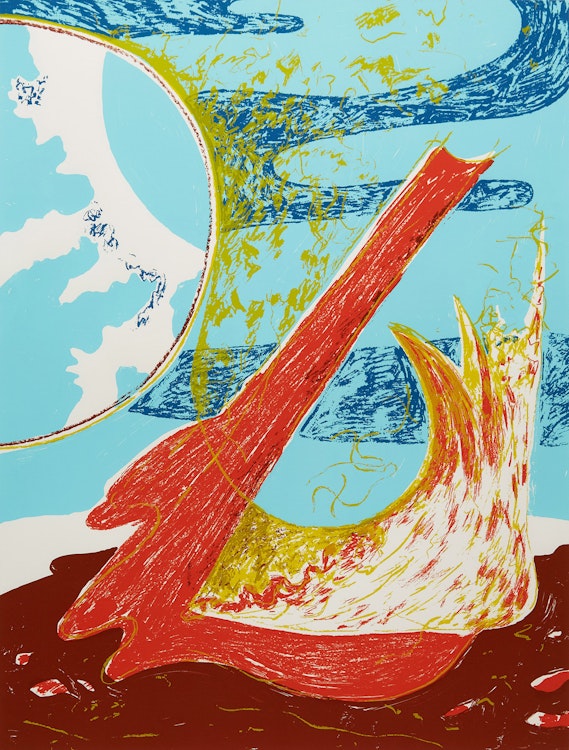Outerland Image: Spring by Claude Breeze

Claude Breeze
Outerland Image: Spring
colour lithograph
signed, titled, dated 1982 and numbered 7/15 in the lower margin
24 x 18 ins ( 61 x 45.7 cms )
Auction Estimate: $200.00 - $300.00
Price Realized $177.00
Sale date: October 26th 2021
Private Collection, Calgary
Share this item with your friends
Claude Breeze
(1938)
Born in Nelson, B.C., he moved to Saskatoon, Saskatchewan, where he received his education and early art training under Ernest Linder. Linder had insisted on good draftsmanship, a quality which Breeze has retained in his work. After his study in Saskatoon, Breeze attended the Regina College where he received direction in his work from Arthur McKay, Roy Kiyooka, Kenneth Lochhead, and Ronald Bloore. He returned to British Columbia where he spent a year at the Vancouver School of Art in 1959.
He was won many awards including the Korlick Scholarship in 1953, 1954; I.O.D.E. Scholarship, 1956; Reeves Painting Scholarship, 1957; Canada Council Junior Fellowship, 1964. He held his first solo show in 1965 under the sponsorship of Vancouver painter Jack Shadbolt. Viewing this exhibit David Watmough of the Vancouver Sun commented, “Hitherto my knowledge of his work had been confined to individual canvases such as the Hill-Raja’s Dream, now purchased by the Vancouver Art Gallery, or his Persian River, his painting currently appearing in the sixth biennial at the National Gallery. But now, with his Lovers in a Landscape series, the full range and power of the Breeze imagination as it concentrates upon and distills the grotesqueries of our time, comes fully into play.”
Watmoguh went on to note the similarity of Breeze’s work to the work of Frances Bacon. Bacon, too, had been concerned with the violent events which he found recorded in modern media of films and photos. In this vein, Claude Breeze focused his attention on the issue of racial hatred brought home to him by an old American photograph of two negroes who had been lynched. Their clothes were ragged, indicating their hopeless state of poverty and the whole scene suggested to Breeze the paradox of the whites in a supposedly Christian society committing this atrocity. Breeze went ahead with a series of sketches until he had developed a drawing that expressed in his own way, his protest to society for allowing racial hatred and injustice to continue. He transferred his ideas to canvas and created a painting 101 1/2 x 66” showing a negro man and woman hanging from a tree. From the bottom of the painting a mass of flames burns symbolic of the flames of hell. One can detect the shape of hands in the fire which Breeze explains are the hands of the white men who have done this deed.
The painting was featured in the first issue of arts/canada (formerly Canadian Art magazine) where a large reproduction of it appears on Page 17 and full discussion about the painting and a general background of the artist as he talked with arts/canada’s editor, Barry Lord. Breeze titled this painting “Sunday Afternoon” (from an old American Photograph). This work was purchased by the Canada Council in 1966.
Sources: "A Dictionary of Canadian Artists, Volume I: A-F", compiled by Colin S. MacDonald, Canadian Paperbacks Publishing Ltd, Ottawa, 1977

